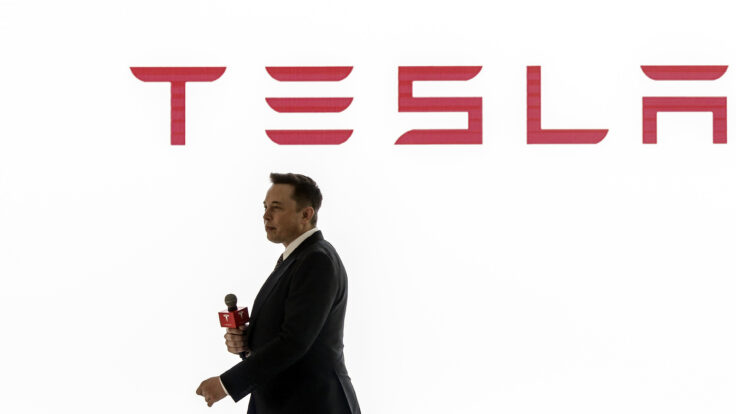 |
 |
|
Welcome back to Dry Powder. I’m Bill Cohan.
In today’s issue, the inside story of a revolt at GE, helmed by current and former employees—all recipients of the company’s generous SUPP, or “supplemental pension,” benefit—who sniffed out an ostensible ploy to undermine their annual pension payments.
But first…
- Ackman aborts: Last week, Bill Ackman said he was capping his new closed-end fund, Pershing Square USA, at a maximum of $10 billion, and that he would file a revised prospectus guiding investors to a range of between $2.5 billion and $4 billion in fresh capital. But then, on Tuesday morning, that turned into a filing for 4 million shares, at $50 each, or $2 billion in invested capital. Of course, $2 billion is still a large I.P.O., but it’s quite a far cry from the $25 billion that Bill previously said he hoped to raise, even if that was a bluff.
Then, this afternoon, he pulled the offering entirely. Ackman justified his decision by saying he was going to keep studying the idea of the offering. “Would investors be better served waiting to invest in the aftermarket than the I.P.O.?” he wrote. “This question inspired us to reevaluate [the offering’s] structure to make the I.P.O. investment decision a straightforward one.” I’m not sure what any of that means, quite frankly. Every investor in an I.P.O. wonders if it will trade better in the aftermarket or worse.
Of course, it couldn’t have helped the I.P.O.’s prospects that one prominent investor, Seth Klarman at Baupost Capital, was no longer going to participate in Bill’s deal. Klarman, who had previously committed to investing $150 million, was pissed that Bill had written about his commitment in a letter to the investors in his management company, which was then released publicly because the lawyers considered the letter a solicitation. (I wrote about this sordid drama last week.)
“All good,” Bill texted me this afternoon. “Better actually.” Can’t wait to hear why. I, for one, will never grow tired of The Bill Ackman Show.
- A cry from the Paramount salt mines: Axios reported yesterday that Edgar Bronfman Jr. is still in the hunt for National Amusements Inc., the Redstone family holding company that controls 77 percent of the voting shares in Paramount Global. Bronfman has previously said that he was thinking of offering between $2 billion and $2.5 billion for NAI, and my sources tell me that Bronfman is doing his diligence on Paramount, as is at least one other party. Bain Capital, which has supposedly partnered with Bronfman, is not taking an active role in the process, I’m told, because the firm does not like to participate in “go-shop” situations. But I’m hearing that if Bronfman comes up with a meaningful way to proceed, it’s likely Bain will resurface as his partner in the bid.
I don’t see how this goes anywhere, to be honest. Unless Bronfman is also going to make an offer to the nonvoting Paramount Global “B” shareholders, as Ellison and RedBird have done, why in the world would the special committee change its recommendation when Bronfman’s deal is just for NAI? The lawsuits have already started from peeved Paramount Global shareholders who feel Shari Redstone got a better deal than they did. If Bronfman just buys NAI, and becomes the new Shari Redstone, the lawsuits will only metastasize. So kick the tires, Edgar, but you’d better be prepared to exceed what Ellison and RedBird have offered both Shari and the Paramount shareholders if you expect the special committee to side with you.
- Zaz-adjusted EBITDA: Morgan Stanley research analyst Ben Swinburne seems to have put the wood to David Zaslav and Warner Bros. Discovery in the wake of the company’s decision to sue after the NBA rejected its attempt to match Amazon’s offer for the so-called “C” package of games. Swinburne lowered his 2024 “adjusted EBITDA” estimate for WBD from $9.7 billion to $9.5 billion—a slight miss but a far cry from the estimate that Zaz once provided in those heady days after his Discovery Communications completed the merger with WarnerMedia. Sure, it’s tough out there, but WBD’s stock is down 64 percent since it started trading in April 2022, and investors are wondering where WBD goes from here. I discussed this issue, among others, with my partners Matt Belloni, Eriq Gardner, Dylan Byers, and John Ourand in a recent and epic roundtable.
|
 |
| There’s Something About Larry |
| For years, GE provided executives with a juicy dowry in retirement, bestowed at the sole discretion of the C.E.O. Then Larry Culp came along and started tinkering with the formula, spinning off the liabilities as he broke up Jack Welch’s empire. Now Culp is backtracking, but the damage has been done. “You can hear [Jack] screaming,” said one person involved in the litigation. “The company has changed culturally, and not for the better.” |
|
|
|
| Back in the day, when GE was still one of the most powerful and valuable conglomerates on Earth, it had an array of substantial employee benefits, but none was as coveted as the SUPP—shorthand for the “supplemental pension.” The SUPP was bestowed at the sole discretion of the C.E.O., and provided a lifetime of annual pension payments derived from a formula based on a senior executive’s age, and their highest three years of compensation, all-in, inclusive of both salary and bonus. It was meant to be an employee-retention tool, and now has as many as 4,000 beneficiaries, both GE retirees and current employees. “It is very generous,” one SUPP grantee told me.
Jeff Immelt, who was C.E.O. of GE for 17 years after Jack Welch, currently receives an annual SUPP payment of around $5 million and will for the rest of his life, according to public filings and the research for my 2022 bestseller about GE, Power Failure. John Flannery, who succeeded Immelt as CEO for roughly 18 months, is getting a SUPP in the range of $1.5 million per year. According to GE’s filings with the S.E.C., at the end of 2022, the supplemental pension liability for GE’s retirees and employees amounted to $5.4 billion.
Now, of course, GE is three companies: GE Aerospace, GE HealthCare, and GE Vernova, with current market values of $188 billion, $38 billion, and $47 billion, respectively. Around the time that GE was put on course to split, according to GE’s public filings and other documents I have reviewed, C.E.O. Larry Culp enacted a series of steps that changed several of the SUPP provisions. In 2020, a revision imposed a new one-year statute of limitations for lawsuits (for failure to pay a benefit, for example). In 2022, GE sent a letter to some of the retired beneficiaries of the SUPP plan stating that their ongoing obligation would be assigned to GE HealthCare, effective January 1, 2023, and that they would no longer have any potential claim against GE. (For other SUPP beneficiaries, the expectation was that their plan would soon be transferred to GE Vernova, or stay at the remaining GE company, GE Aerospace.)
Obviously, beneficiaries whose SUPP was assigned to GE HealthCare, with a market value some 20 percent of GE Aerospace, were probably not happy—a fact compounded by both the lower credit rating of GE HealthCare and by the one-year statute of limitation against bringing a claim if, for example, HealthCare failed to pay the SUPP for whatever reason. The same concern applied to those who were likely to be assigned to GE Vernova, which was the last of the companies to be spun off from GE Aerospace. “That was a black box,” said one SUPP beneficiary, regarding how GE assigned the ongoing liabilities across the three spincos.
There was one other provision that GE acknowledged to its SUPP beneficiaries: Any of the three companies that ended up with their benefit could decide in its sole discretion to assign the liability to a third-party designee to pay. As one person involved told me, GE could assign payment for the SUPP to the “cleaning lady” and if, for whatever reason, the assignee stopped paying, there wouldn’t be anything the beneficiary could do about it. Meanwhile, around the same time GE was revising its SUPP liability structure, Culp had re-cut his own option package to net something like $225 million in stock. People were pissed.
|
|
A MESSAGE FROM OUR SPONSOR
|
 |
| Introducing an exclusive bond portfolio personalized by Betterment to your tax situation – automatically seeking additional after-tax yield.
Finally, a bond portfolio with you in mind.
Get started today.
|
|
|
| Erin Brockovich for the 1-Percent |
|
| Most people, no matter how sophisticated, would likely have missed the implications of GE’s changes to the SUPP policy. It was dense and highly legalistic. John Samuels, a former partner at the now-defunct law firm of Dewey Ballantine, had been recruited to GE’s stellar legal department by Ben Heineman, another legendary attorney whom Welch had tasked with creating a world-class law department at the company. Samuels spent nearly 30 years at GE, and was responsible for the company’s global tax policy, tax planning, and tax compliance operations. These days, Samuels is Steve Schwarzman’s top tax guy at Blackstone, and a formidable foe. In other words, Samuels is not most people.
Samuels, whose SUPP was assigned to GE HealthCare, couldn’t believe that GE was claiming it could assign the SUPP to a third party unilaterally. (In 2005, a federal judge ruled against Monsanto when it tried to pawn its pension liabilities off on a company that subsequently went bankrupt.) So he contacted a bunch of big-name litigation law firms, plenty of which were conflicted and others that simply declined to represent the SUPP beneficiaries, to find someone to represent the retirees. (The losses were purely theoretical at that point, and so many of the law firms couldn’t see how they were going to be paid.)
He eventually contacted Keith Sherin, a former GE C.F.O. and C.E.O. of GE Capital. Eventually, they found a Minneapolis law firm, Engstrom Lee, to represent them. Together, Engstrom Lee, Samuels, and Sherin organized a group of 500 or so SUPP beneficiaries on a series of Zoom calls. They found eight beneficiaries to act as named plaintiffs in a potential lawsuit against GE. They raised some $500,000 or so from some 400 of the SUPP beneficiaries to pay Engstrom Lee’s legal fees.
At one point, in May 2023, at the GE annual shareholder meeting, Mike Holston, then GE’s general counsel, relayed to Culp a question from a shareholder about whether the pending breakup of the company created “any possibility” that the three newcos could “opt out” or “decide not to fund” GE’s retirement plans, such as the SUPP. Culp answered carefully. “The businesses do not have the right to take away accrued and vested benefits under these plans,” he said. But Culp did not say that GE could not transfer or assign the benefits. Brackett Denniston, a former GE general counsel, met with Holston in Florida to discuss the issue. That conversation went nowhere.
In September 2023, Engstrom Lee filed an “administrative complaint” to GE’s Benefits Administrative Committee, as was required by the rules of the SUPP plan. In effect, as a first step, GE was both the judge and jury of whether or not GE could make these moves against the SUPP beneficiaries. GE attempted to sanction Engstrom Lee, accusing it of trying to bring a frivolous lawsuit. “We were basically a grassroots campaign,” said one of the participants involved. “We didn’t have any emails or anything” of the GE retirees. He continued, “We’re all disappointed, and we’re angry that we have to deal with something like this.”
On December 8, 2023, GE’s Pension Board Staff wrote Carl Engstrom a six-page letter denying the claims that his firm had asserted in the complaint. GE argued that the beneficiaries didn’t have “standing” to bring a claim because they hadn’t yet been denied any payments. But Engstrom Lee argued that their clients did have standing because of the 2020 change to the plan that started the one-year clock on whether a lawsuit could be brought. If that change were to be operative, how could anyone sue if their payments weren’t made since it was then 2023, well more than a year since 2020?
The denial of their claims by the GE Pension Board gave Engstrom Lee the right to sue GE in court. Samuels, Sherin, and Engstrom Lee, plus the eight named plaintiffs, told GE they now intended to sue. “I’m still puzzled in my mind why GE thought they could get away with this,” said one of the beneficiaries involved. According to documents I have reviewed, GE’s general counsel suggested that the two sides have settlement discussions.
|
|
|
|
|
| For the next six months, the two sides talked about a settlement. On July 1, GE caved, giving the SUPP and deferred compensation beneficiaries nearly everything they wanted—tossing out the one-year time frame concept, eliminating an “implied novation” framework, and ensuring the settlement applied to all SUPP beneficiaries and to employees who had chosen to defer some of their compensation on a tax-deferred basis, etcetera. The settlement avoided the cost and risk of litigation for both sides. The SUPP beneficiaries didn’t get everything—GE Aerospace will still not be on the hook for benefits transferred to GE HealthCare or GE Vernova, but if those benefits are reduced or interrupted, the beneficiaries can sue without the previous time limitations. The beneficiaries thought seriously about litigating, but in the end decided to settle. “We now have everything we need,” said one participant in the fight.
On Tuesday and Wednesday, the settlement was explained to the various beneficiaries, and will be made public tomorrow morning. “After serving GE for nearly 30 years, forgoing other opportunities for the promise of my supplementary pension benefits, I was concerned that my benefits were no longer secure,” explained Brian Davies, a former human resources executive at GE and one of the retirees involved in the negotiations with GE. “I am relieved that GE has agreed to preserve our ability to enforce our legal rights to protect my family’s financial security in retirement.” Added Carl Engstrom, “Corporations are increasingly looking to cast off their obligations to pay their employees’ retirement benefits, but the law does not let them off the hook. Our clients devoted their working years to GE and we are pleased to have ensured that they will have their day in court if their pension benefits aren’t paid.” (For its part, GE Aerospace’s corporate communications executives did not respond to multiple requests for comment.)
When I asked what Welch would have thought of GE’s gambit to try to take away the benefits of GE’s retirees, one person involved told me, without hesitation, “You can hear him screaming. Nobody likes it. We all believe the company has changed culturally, and not for the better.”
|
|
|
|
| FOUR STORIES WE’RE TALKING ABOUT |
 |
| Harris’s Big Hire |
| A close look at Kamala’s pick to lead her campaign policy team. |
| JULIA IOFFE |
|
 |
| NFL’s $7M Headache |
| Revealing a multi-million dollar arbitration ding for the NFL Players Union. |
| ERIQ GARDNER |
|
 |
| Marisol’s Moment |
| On the posthumous beneficence of the elusive artist. |
| MARION MANEKER |
|
 |
|
|
|
|
|
 |
|
|
|
Need help? Review our FAQs
page or contact
us for assistance. For brand partnerships, email ads@puck.news.
|
|
You received this email because you signed up to receive emails from Puck, or as part of your Puck account associated with . To stop receiving this newsletter and/or manage all your email preferences, click here.
|
|
Puck is published by Heat Media LLC. 227 W 17th St New York, NY 10011.
|
|
|
|













